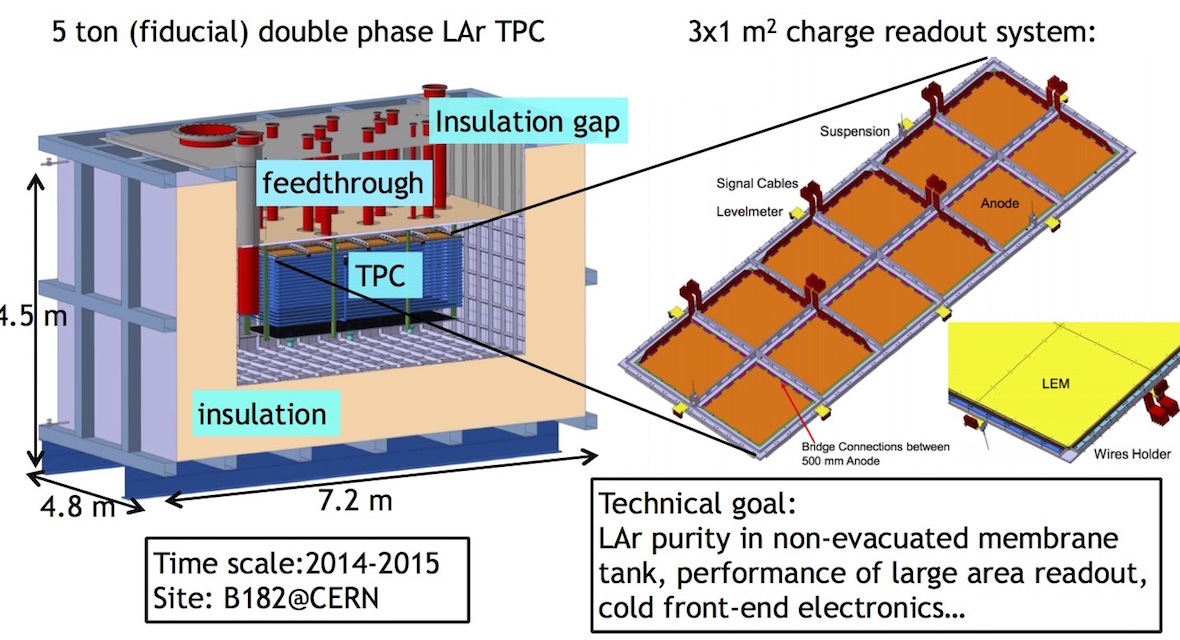The WA105 Experiment - ProtoDUNE Double-Phase
Test Beam Data and Detector R&D
While liquid argon TPC technology is fairly advanced, there is currently still a lot of research being done to optimise detector design and reduce costs, as well as R&D to see if new methods of readout are possible. In addition, test beam experiments are necessary in order to obtain precise data how a priori known particles interact in the liquid argon. This will allow better particle identification in neutrino liquid argon experiments and significant background reduction. There are currently several test beam experiments which are either running or in the construction/design phase. UCL is involved in the WA105 experiment, which is currently being constructed at CERN. WA105 is a also known as the ProtoDUNE Double-Phase and will both test new technology and provide test beam data to use in existing and future neutrino liquid argon experiments. At least one of the final DUNE 10kTonne Far Detectors is expected to be a double-phase liquid argon TPC.
The WA105 Experiment
WA105 will be a 5 ton 6mx6mx6m double-phase liquid argon TPC which will use a non-evacuated membrane tank and a recirculation system to achieve the required LAr purity. A schematic of the experiment is shown below. The demonstration of the use of the double-phase design in a medium LAr-TPC such as WA105 would allow the double-phase concept to be scaled for use in future very-large multi-kton liquid Argon detectors.
The WA105 Purity Monitor
The HEP group at UCL has built the purity monitor system for the WA105 3mx1mx1m prototype, taking data in 2017. It is expected that this purity monitor will also be used in the future 6mx6mx6m actual detector in a test beam at CERN. The group is also involved in simulation work as well as in the running of the experiment at CERN. For questions about WA105 at UCL please contact Prof. Mario Campanelli.

